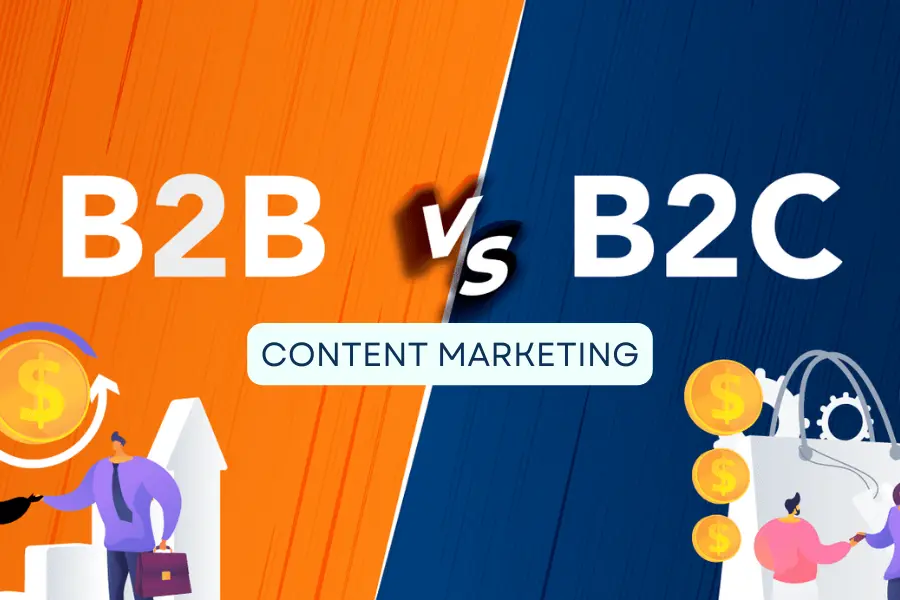Content Marketing for B2B vs. B2C

Content marketing is a powerful tool for businesses to engage with their audience, but the approach can vary significantly between B2B (business-to-business) and B2C (business-to-consumer) markets. Understanding these differences, including copywriting and content writing for both areas is crucial for developing an effective content strategy that resonates with your target audience. But first, let us understand the difference between B2B and B2C.
What is B2B and B2C?
B2B (business-to-business) refers to transactions between businesses, where one business sells products or services to another for use in their operations or resale. B2B transactions are often based on factors such as efficiency, ROI, and compatibility with existing systems.
B2C (business-to-consumer) refers to transactions between a business and individual consumers, where businesses sell products or services directly to consumers for personal use or consumption. B2C transactions are often based on factors such as price, brand reputation, and personal preferences.
Let's explore the key distinctions between B2B and B2C content marketing:
1. Audience and Decision-Making Process
B2B: In the B2B market, the audience is typically composed of professionals and decision-makers who are looking for solutions to specific business challenges. The decision-making process is often complex, involving multiple stakeholders and a longer sales cycle. Content for B2B audiences should focus on providing in-depth information, addressing pain points, and showcasing expertise.
B2C: B2C audiences are generally individuals who make purchasing decisions based on personal preferences, emotions, and immediate needs. The decision-making process is shorter and more straightforward. Content for B2C audiences should be engaging, emotional, and easy to consume, focusing on benefits and value propositions.
2. Tone and Messaging
B2B: The tone for B2B content is typically professional, informative, and educational. Content should demonstrate thought leadership, offer insights and solutions, and establish credibility. Messaging should be clear, concise, and tailored to the needs of the target audience.
B2C: B2C content can be more casual, conversational, and emotive. The tone should be relatable and focused on evoking emotions such as joy, excitement, or fear of missing out (FOMO). Messaging should highlight the benefits of the product or service and appeal to the audience's desires and aspirations.
3. Content Formats
B2B: B2B audiences often prefer in-depth, research-driven content such as whitepapers, case studies, and industry reports. Webinars, podcasts, and expert interviews are also effective for B2B content marketing, providing valuable insights and thought leadership.
B2C: B2C audiences prefer more visual and interactive content, such as videos, infographics, and social media posts. Content should be easily digestible and shareable, focusing on SEO copywriting, entertainment, and practical value.
4. Distribution Channels
B2B: B2B content is often distributed through professional networking platforms such as LinkedIn, industry forums, and email newsletters. Paid advertising on niche websites and search engines can also be effective for reaching B2B audiences.
B2C: B2C content is typically distributed through social media platforms such as Facebook, Instagram, and TikTok, as well as through influencers and brand ambassadors. Paid advertising on these platforms can help reach a wider audience and drive engagement.
While the goals of content marketing remain the same for both B2B and B2C markets – to attract, engage, and convert customers – the strategies and tactics used to achieve these goals can vary significantly. By understanding the unique characteristics of each market and tailoring your content accordingly, you can create more effective and impactful content marketing campaigns. You can also partner with a leading content marketing agency in India such as Light Buzz Media to curate strategies that give the results you need.